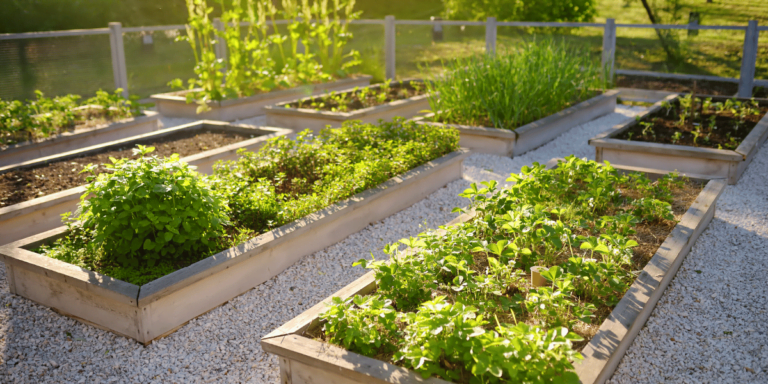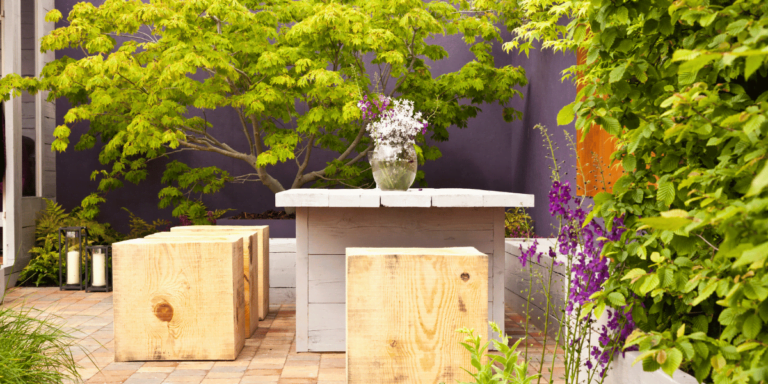Welcome to our article series on native plant gardening! In a world rapidly urbanizing, it’s crucial to understand the importance of preserving local flora and its impact on our environment. The expansion of cities and towns has resulted in the loss of millions of acres of natural habitat and farmland. As a result, we now have a landscape dominated by human activities, lacking in functioning ecosystems. By embracing native plant gardening, we can help restore biodiversity and create sustainable environments for future generations.
When we talk about native plants, we refer to those that naturally occur in a specific region or ecosystem. These plants have evolved over time to thrive in the local climate, soil conditions, and interact with local wildlife. The availability of non-native plants in nurseries has disrupted the delicate balance of the local food web and contributed to the decline of native species. By choosing native plants for our gardens and landscapes, we can play a vital role in supporting wildlife and maintaining ecological harmony.
Throughout this article series, we will explore the importance of native plants in creating wildlife-friendly habitats, the benefits they offer in terms of low maintenance and climate change resilience, and the role they play in sustainable gardening practices. We will also delve into the significance of local ecotypes and genetic diversity in preserving the health and resilience of our landscapes. Lastly, we’ll discuss the importance of sourcing plants from local nurseries and the ecological impact it has on our gardens.
Native plant gardening is not just about creating beautiful landscapes; it’s about making a positive impact on the environment. By understanding the value of local flora and incorporating it into our gardening practices, we can foster biodiversity, support wildlife habitats, and contribute to the overall health of our planet.
Key Takeaways:
- Urbanization has led to the loss of millions of acres of habitat and farmland, resulting in a human-dominated landscape that cannot support functioning ecosystems.
- Native plants, which occur naturally in a region, are essential for supporting wildlife and maintaining biodiversity.
- Choosing native plants for landscaping can create a more sustainable environment for birds and other wildlife.
- Native plants provide essential habitat for birds and wildlife, supporting a diverse range of pollinators and offering food sources for all forms of wildlife.
- Once established, native plants require minimal maintenance, enhance the beauty of a garden, and promote a healthier environment by reducing the need for chemical fertilizers and pesticides.
The Importance of Native Plants for Wildlife Habitat
Native plants play a vital role in creating and maintaining wildlife habitat. These plants, which naturally occur in a specific region, provide essential resources and support for birds, insects, and other wildlife. Landscaping choices that prioritize native plants can have a significant impact on the survival of bird populations and the overall health of ecosystems.
Research demonstrates the critical role that native plants, such as oak trees, play in supporting bird survival. Native oak trees can support over 500 species of caterpillars, a crucial food source for birds, while non-native trees only support a fraction of that number. By incorporating native plants into our landscapes, we can provide the necessary food and habitat for birds to thrive.
But it’s not just birds that benefit from native plants. These plants also attract a diverse range of pollinators, including bees, butterflies, and other insects. Pollinators are essential for ecosystem functioning and play a vital role in supporting plant reproduction. By providing a habitat rich in native plants, we can foster greater insect biodiversity and ensure the health of our ecosystems.
Furthermore, native plants offer shelter and food for a variety of wildlife, including mammals and other small animals. From providing cover for nesting birds to offering berries and seeds for foraging animals, native plants create a balanced and sustainable ecosystem that supports the overall well-being of wildlife populations.
The Benefits of Native Plants for Wildlife Habitat:
- Native plants support bird survival by providing a diverse and abundant food source.
- They attract a wide range of pollinators, ensuring healthy plant reproduction and biodiversity.
- Native plants offer shelter and food for mammals and other small animals.
By incorporating native plants into our landscapes, we can create thriving wildlife habitats and contribute to a healthier and more sustainable environment.
| Native Plants | Non-Native Plants |
|---|---|
| Support over 500 species of caterpillars | Support only a fraction of that number |
| Attract a diverse range of pollinators | Attract fewer pollinators |
| Provide shelter and food for a variety of wildlife | Offer limited resources for wildlife |
Benefits of Native Plants in the Garden
Native plants bring a multitude of benefits to gardens, making them an ideal choice for homeowners and landscape enthusiasts. From low maintenance requirements to their inherent beauty, incorporating native plants can transform your garden into a healthy and stunning oasis. Let’s explore some of the key advantages:
1. Low Maintenance
Once established, native plants are incredibly low maintenance, freeing up your time and effort for other activities. Unlike non-native plants that may require frequent watering and extensive care, native plants are adapted to local environmental conditions, making them resilient and self-sufficient. This means less watering, pruning, and fertilizing, allowing you to enjoy a hassle-free garden.
2. Beauty in Diversity
Native plants offer a wide array of visually appealing options for your garden. With their showy flowers, colorful fruits, and unique foliage, these plants can add a touch of natural beauty and charm to your outdoor space. Furthermore, by using native plants, you can recreate the diverse and vibrant landscapes that once thrived in your region, fostering a connection to the local ecosystem.
3. Creating Healthy Places
By opting for native plants, you contribute to creating a healthier environment. Native plants have evolved alongside local wildlife, providing them with essential food sources and habitats. By supporting local flora through your garden, you are ultimately promoting the wellbeing of birds, butterflies, and other wildlife, helping to maintain a thriving ecosystem right in your backyard.
4. Climate Change Resilience
Native plants play a crucial role in combating climate change. They have the remarkable ability to store carbon dioxide, helping to reduce greenhouse gas emissions and mitigate the impacts of climate change. By incorporating native plants into your garden, you contribute to the collective effort of reducing your carbon footprint and creating a more sustainable future.
5. Water Conservation
In times of increasing water scarcity, native plants offer a water-wise solution for your garden. These plants are naturally adapted to local conditions, which means they require less water compared to non-native species. By choosing native plants, you can significantly reduce water usage, promoting water conservation and maintaining the balance of local ecosystems.
To gain a better appreciation for the beauty and benefits of native plants in the garden, take a look at the image below:
As you can see, native plants bring vibrancy, diversity, and a sense of harmony to a garden while requiring minimal maintenance and contributing positively to the environment. Make the smart choice, and embrace native plants to create a beautiful, sustainable, and wildlife-friendly garden.
The Role of Native Plants in Sustainable Gardening Practices
Native plant gardening plays a crucial role in promoting sustainable practices in gardening. By incorporating native plants into your landscape, you can contribute to a more eco-friendly design while supporting local flora and fauna. Let’s explore how native plants align with sustainable gardening practices:
Reducing Reliance on Synthetic Chemicals
One of the key benefits of native plants is their natural resilience and ability to thrive without the use of synthetic chemicals. Unlike non-native plants that may require intensive fertilization and pesticide use, native plants have adapted to the local environment and are less susceptible to pests and diseases. By choosing native plants, you can significantly reduce your reliance on harmful synthetic chemicals, creating a healthier and more sustainable garden.
Minimizing Water Usage
Water conservation is an essential aspect of sustainability, especially in regions facing water scarcity. Native plants have evolved to thrive in their specific environments, typically requiring less water than non-native alternatives. Their deep root systems help retain moisture in the soil, reducing the need for frequent watering. By incorporating native plants into your landscape, you can minimize water usage and contribute to the conservation of this precious resource.
Contributing to Renewable Energy Efforts
Native plants also play a significant role in supporting renewable energy initiatives. Through the process of photosynthesis, plants absorb carbon dioxide and release oxygen, effectively storing carbon. This helps combat climate change by reducing greenhouse gas emissions and promoting cleaner air. By incorporating native plants that are adapted to your region’s climate, you can contribute to renewable energy efforts and create a more sustainable future.
Enhancing Soil Health with Organic Composting
Organic composting is a sustainable practice that helps improve soil health and fertility. By utilizing organic materials such as kitchen scraps, leaves, and yard waste, you can create nutrient-rich compost that nourishes your native plants. Organic composting promotes natural nutrient cycling, reduces waste, and eliminates the need for synthetic fertilizers. Incorporating this eco-friendly practice into your gardening routine further enhances the sustainability of your landscape.
By adopting sustainable gardening practices that include native plants, you can create an environmentally friendly landscape that supports local flora and fauna. These practices not only minimize the ecological impact of gardening but also contribute to the overall health and resilience of our ecosystems.
The Importance of Local Ecotypes and Genetic Diversity
When it comes to native plant gardening, informed gardeners understand the significance of using local ecotypes and preserving genetic diversity. Local ecotypes refer to native plants that are grown from locally collected seed, making them highly adapted to the specific environmental conditions of their native regions. By prioritizing local ecotypes and genetic diversity, gardeners can ensure that their landscapes remain resilient and have a positive ecological impact.
Using local ecotypes in gardening is essential because these plants have evolved over time to thrive in the unique climate, soil, and other ecological factors of their respective regions. Their deep-rooted history in the area makes them well-suited for local landscapes, and they contribute to the overall ecosystem health.
In contrast, plant cloning and the use of non-local plants can result in a loss of genetic diversity. Genetic diversity is crucial for maintaining a healthy environment and ensuring the long-term survival of plant species. By choosing non-local varieties or clones, gardeners miss out on the opportunity to support the full range of genetic adaptations that native species possess.
Preserving genetic diversity is essential for the continued adaptation of plant populations to changing environmental conditions. Native plants that exhibit genetic diversity may possess traits that enable them to withstand climate change, resist pests or diseases, or thrive in specific soil types. By planting a diverse range of local ecotypes, gardeners can help maintain this vital genetic diversity within their own landscapes.
Therefore, informed gardeners play a crucial role in protecting plant provenance and supporting genetic diversity by prioritizing local ecotypes in their gardening practices. This not only ensures the health and resilience of their own landscapes but also contributes to the overall ecological balance.
Benefits of Local Ecotypes and Genetic Diversity in Native Plant Gardening:
- Enhances ecosystem resilience by supporting locally adapted plant species
- Contributes to the overall health and stability of plant populations
- Facilitates adaptation to changing environmental conditions and climate change
- Preserves a wide range of genetic traits that can aid in resilience against pests, diseases, and other stressors
- Supports the ecological balance and biodiversity of the surrounding area
Creating Wildlife-Friendly Landscapes with Native Plants
Planting native plants is crucial for supporting wildlife in your landscape. By choosing native plants, you can create an environment that benefits a variety of creatures, including birds, mammals, butterflies, and pollinators. However, it’s important to note that not all native plants are equally beneficial to wildlife.
Nativars, which are cultivated varieties of native plants, may possess characteristics that make them less useful for supporting wildlife. These traits can include reduced nectar or pollen production, altered growth habits, or a lack of specific structures that provide shelter or food. To truly create a wildlife-friendly landscape, it’s essential to prioritize native plants that closely resemble their wild counterparts.
To ensure the success of your wildlife-friendly landscape, consider purchasing native plants from reputable nurseries that prioritize local ecotypes and genetic diversity. These nurseries specialize in growing native plants that are adapted to your specific region, ensuring they provide the necessary resources for local wildlife. By supporting these native plant nurseries, you contribute to landscape biodiversity and help protect the natural heritage of your area.
By selecting native plants from trusted nurseries, you can create a landscape that supports wildlife while promoting landscape biodiversity. These plants serve as a source of food, shelter, and nesting material for various species. Additionally, native plants attract a diverse array of insects, which are crucial for pollination and maintaining a healthy ecosystem. By fostering a balance between plants and wildlife, you transform your landscape into a thriving habitat.
The Importance of Planting Locally-Sourced Native Plants
When it comes to choosing native plants for your landscaping, the plant provenance and source play a crucial role. Opting for plants that are grown from locally collected seed and cultivated by local nurseries can have a significant ecological impact. These locally-sourced native plants are specifically adapted to thrive in the conditions of their ecoregion, ensuring their success in your landscape.
By prioritizing locally-sourced native plants, you are supporting the preservation of genetic diversity and promoting the health of local ecosystems. Plants that are grown in different regions may not be as well-adapted to the specific environmental conditions of your area, which can result in lower success rates and limited ecological benefits. Local nurseries offer a wide variety of locally-sourced native plants that are better suited to your region’s climate, soil, and other factors.
One of the key advantages of planting locally-sourced native plants is the reduced risk of introducing new pests and diseases to your landscape. These plants have developed natural defenses against local pests and diseases, making them more resilient and less susceptible to infestations. By choosing locally-sourced options, you can minimize the need for synthetic pesticides and contribute to the overall health of your garden.
Eco-friendly garden design starts with local nurseries
When selecting native plants for your garden, it’s advisable to visit and support your local nurseries. These nurseries play a vital role in preserving and propagating native plants, ensuring their availability for homeowners and landscapers. Local nurseries often have a deep understanding of the local flora and can provide valuable advice and guidance on suitable plant choices for your specific needs.
Furthermore, buying from local nurseries strengthens the local economy and reduces the ecological footprint associated with long-distance transportation. By purchasing locally-sourced native plants, you support local businesses while minimizing the carbon emissions associated with plant transportation over long distances.
By prioritizing plant provenance and supporting local nurseries, you can create a garden that not only enhances the ecological value of your landscape but also contributes to the sustainability of your community.
| Benefits of Planting Locally-Sourced Native Plants | Reasons to Choose Local Nurseries |
|---|---|
|
|
Conclusion
Native plant gardening is a vital practice for nurturing biodiversity, supporting wildlife, and cultivating sustainable landscapes. By embracing native plants in their gardens, individuals can play an active role in restoring and maintaining functioning ecosystems, while also providing essential habitats for birds and other wildlife species. This approach not only benefits the environment but also reduces our ecological footprint.
By choosing locally-sourced native plants and prioritizing genetic diversity, gardeners can ensure the long-term health and resilience of their landscapes. Native plants that have grown from locally collected seeds are best equipped to thrive in their specific ecoregions, making them powerful contributors to the preservation of local flora and fauna. Additionally, promoting genetic diversity within our landscapes is crucial for maintaining healthy ecosystems and safeguarding against the effects of climate change.
Let’s take action today and start planting native plants in our gardens. By doing so, we can make a positive impact on the environment, support wildlife, and create sustainable habitats. Together, we can build a future where native plant gardening becomes the norm, ensuring a vibrant and diverse natural world for generations to come.
Frequently Asked Questions
Why is it important to prioritize local flora in native plant gardening?
Prioritizing local flora is important because urbanization has led to the loss of habitat and farmland, resulting in a human-dominated landscape that cannot support functioning ecosystems. By choosing native plants, homeowners can create a more sustainable environment for birds and other wildlife by providing essential habitat and maintaining biodiversity.
What benefits do native plants provide for wildlife habitat?
Native plants offer essential habitat for birds and wildlife by supporting a diverse range of pollinators, providing shelter for mammals, and offering essential food sources. They also support a higher number of caterpillar species compared to non-native plants, which are crucial food sources for birds. By using native plants, homeowners can significantly impact bird populations and the overall health of ecosystems.
What benefits do native plants offer in a garden setting?
Native plants require minimal maintenance once established, saving time and effort for gardeners. They enhance the beauty of a garden with their showy flowers and colorful fruits and seeds. Additionally, native plants reduce the need for chemical fertilizers and pesticides, combat climate change by storing carbon dioxide, and require less water, promoting water conservation.
How do native plants align with sustainable gardening practices?
Native plants reduce reliance on synthetic chemicals, minimize water usage, and contribute to renewable energy efforts by storing carbon dioxide. Incorporating organic composting methods further enhances the sustainability of the garden. By adopting these practices, gardeners can create eco-friendly landscapes that support local flora and fauna.
Why is it important to prioritize local ecotypes and genetic diversity?
Local ecotypes, native plants grown from locally collected seed, are the ideal choice as they are adapted to the specific conditions of their native regions. Plant cloning and the use of non-local plants can result in a loss of genetic diversity, which is essential for maintaining a healthy environment. By prioritizing local ecotypes and genetic diversity, gardeners can ensure their landscapes are resilient and support a thriving ecosystem.
What should gardeners consider when purchasing native plants?
It is crucial to consider the provenance and source of native plants. Plants grown from locally collected seed and cultivated by local nurseries are the best choice as they are specifically adapted to the conditions of their ecoregion. By avoiding plants grown in different regions and prioritizing locally-sourced options, gardeners can prevent the introduction of new pests and diseases to their landscape.
How does native plant gardening benefit wildlife and landscape biodiversity?
Planting native plants is crucial for supporting wildlife, including birds, mammals, butterflies, and pollinators. Native plants provide essential habitat, food sources, and shelter for wildlife, promoting landscape biodiversity. Purchasing native plants from reputable nurseries that prioritize local ecotypes and genetic diversity ensures that landscapes truly benefit local wildlife and the environment.
What is the significance of planting locally-sourced native plants?
Plant provenance is important for minimizing ecological impact and maintaining a healthy environment. Locally-sourced native plants, grown from locally collected seed by local nurseries, are specifically adapted to the conditions of their ecoregion. Planting locally-sourced native plants prevents the introduction of new pests and diseases and supports the long-term health and resilience of landscapes.

















